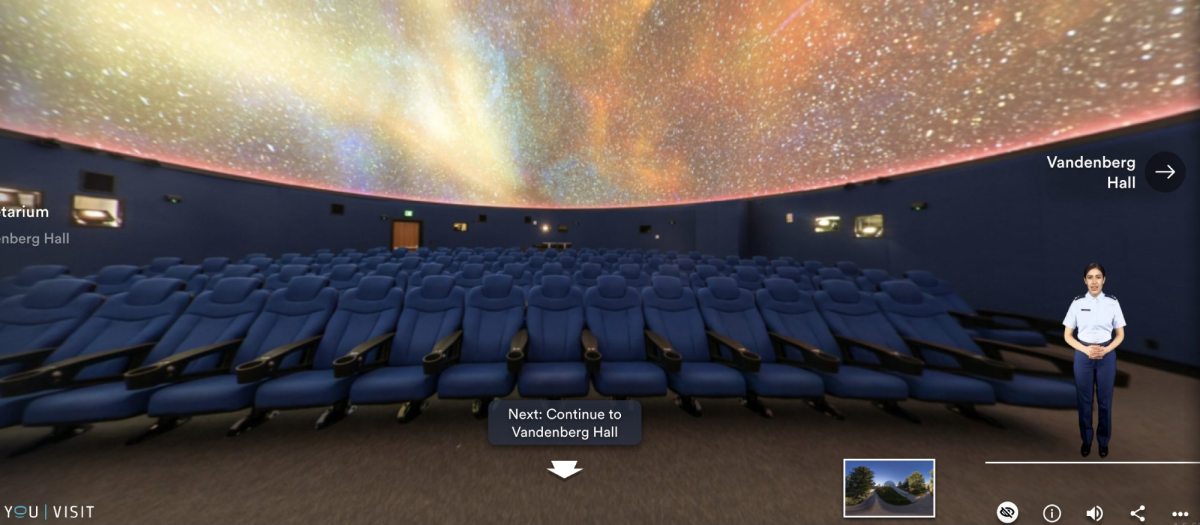Virtual campus tours are catching on in higher education

Virtual college tours became a staple during the coronavirus pandemic, with a jump of 258% in participation among high school seniors, according to April statistics from the educational technology company EAB.
Universities invested in tools to build out virtual tours when campuses shut down and student tour guides were no longer on campus to form connections with prospective students. As students and faculty head back to campus, universities are continuing to develop those offerings to stand out to students who want an individualized experience, tour companies say.
“Every college visit you go on they tell you about how crazy their squirrels are, or this really wacky tradition — there’s a formula to it all,” said Raya Ward, co-founder of Adora, a virtual campus tour provider. “Maybe when you’re so deep in it, you don’t realize it, but for students who are visiting multiple schools a month, it’s actually the details of the program they’re going to be in, the student group they’re going to be in that are going to hook them.”
Chris Carson, the president of Campus Tours, which has been providing virtual tours since 1997, said authenticity is key to engaging students. Because prospective university students grew up with rampant internet and media advertising, they’re “very aware of when they’re being sold to,” he said.
“What you’ll notice is [college campus tours are] very heavily marketed,” Carson said. “It’s the institution’s perspective being reinforced by a tour guide.”
But with virtual tours, companies like Carson’s are trying to do things differently.
Building connections
Virtual tours are typically conducted through two approaches: a map-based interface, where users click on buildings to get information, or virtual walk-throughs that guide students through the perspective of touring campus in-person, often using panoramas.
Adora, which was started by a team of Princeton undergraduates, uses a map interface, with a heavy emphasis on personalizing the experience. A student can use filters like “study abroad,” “dining,” “athletics” or “first-generation students” to curate the stops on their tour for a customized route. Universities, meanwhile, provide information, photos and video for each stop, which users can also filter, depending on their interests.
“Because [Adora’s staff members] are students first, we’re able to really tell our schools, ‘Hey, drop all the fancy language. Just tell the students that just want to hear about it,'” Ward said. “We really encourage them to get their students involved in the content process. If we can have students writing this, that’s really interesting for prospective families.”
Getting students involved in panoramic, 360-degree tours means incorporating video. YouVisit, a company EAB acquired in 2019, incorporates student-recorded videos to buildings and landmarks in its walk-through tours. P.J. Morreale, a managing director at EAB, said virtual touring isn’t about mimicking what guides would do on an in-person walking tour.
“Instead of specifically walking into a physical building, like an engineering building or a science building, and making the messaging be a little bit more about ‘this is where you walk in, and this is where you sit,’ it’s more about, here’s the people, here’s the spirit, here’s how we tell our story,” he said. “Here’s more about what you might expect to learn or take away at the end of the program with this particular professor, or in this particular college.”
In a tour YouVisit made for the U.S. Air Force Academy, a tour guide explains each stop from the corner of the screen. Clicking on a picture of a student in front of the academy’s prep school stops the narrator and the website plays a video in which the student explains her experience and what she learned at the prep school before entering the academy. Virtual tours are an opportunity for institutions to approach storytelling differently, Morreale said.
“While it is important to the student who visits these tours that they see the physical spaces, they really want to know how how they’re going to feel, how are they going to fit in,” he said. “I think that that’s something that the virtual tours just historically have done very well, regardless of the global situation.”
A standard practice
As students around the country return to their campuses, college officials still are looking to grow their use of virtual tours. That’s in part because virtual tours boost accessibility for students who don’t have the resources to travel for a campus tour. The staying power also comes from this kind of technology becoming a standard offering that students expect. When nuCloud, an interactive maps and virtual tours provider that was acquired by Modern Campus earlier this year, started in 2008, its technology was viewed as a luxury.
“When the student is trying to find a school, they have maybe a list of 10 schools,” said Nick Catto, a nuCloud product specialist at Modern Campus. “If they look at five of those schools that have interactive maps and then yours doesn’t, that speaks poorly to you.”
Virtual campus tours can also be a supplement for existing tours, said Carson, the Campus Tours president, with guides walking students through general tours using a virtual platform and then later guiding them to buildings they want to see in-person.
Adora was acquired last month by Full Measure Education, which for the product means additional resources to continue redefining the admissions process. Ward, the Adora co-founder who’s now a design manager at Full Measure, said her team is working on how to follow-up with students on tour interests, like by sending out information on financial aid or extracurricular activities students signaled interest in.
“We wanted to go a step further, other than just digitizing tours, and what the next step of campus visits is in a world where technology is widespread,” she said. “Part of that is saying that a visit is just step one of an entire lifecycle we want to track.”
This story is part of EdScoop’s Special Report on Emerging Edtech.



